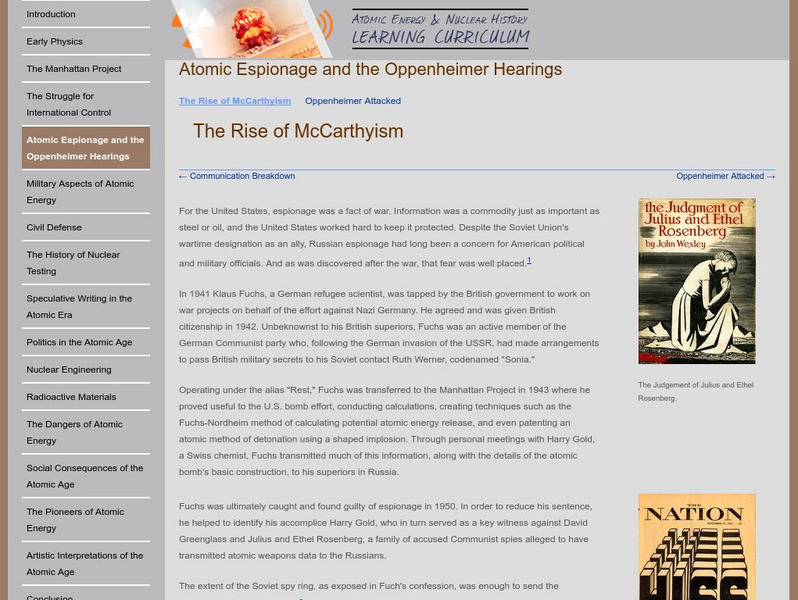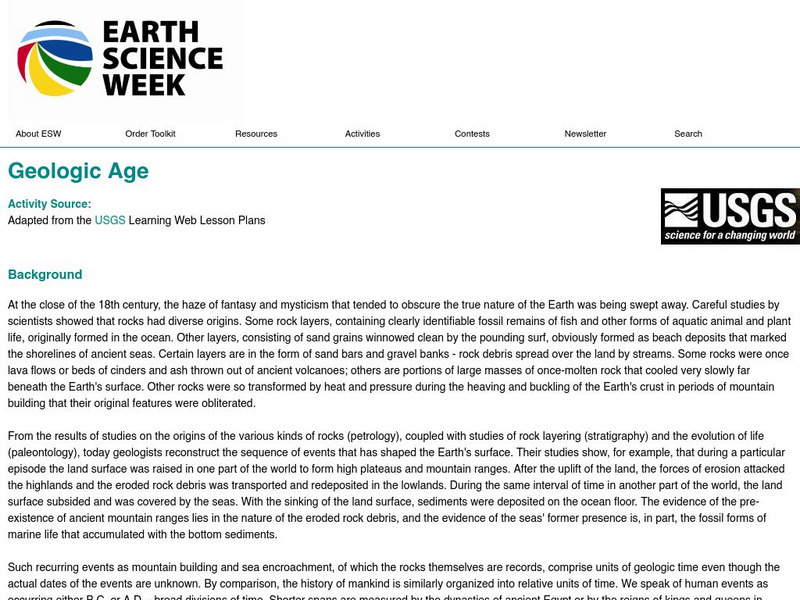American Academy of Achievement
Academy of Achievement: Edward Teller, ph.d.
Biography of Edward Teller teaches us about his early life which began in Budapest, Hungary, his interest in physics and his subsequent contributions in the development of the atomic bomb.
PBS
Pbs Learning Media: The Dating Game: Radioactive Carbon
In this media-rich essay from the NOVA: "Mystery of the First Americans" Web site, learn about the atomic structure of radioactive carbon and how it can be used to determine the age of organic remains, such as bones and teeth.
Oregon State University
Osu: Atomic Espionage and the Oppenheimer Hearings
Atomic Energy and Nuclear History Online exhibit from Oregon State University Library features information on Atomic Espionage and the Oppenheimer Hearings.
Other
Los Alamos National Laboratory
The official website of the Los Alamos National Laboratory. You will find the history of the laboratory as well as many of the key figures. There is also an interactive history of the Manhattan Project. Be sure to check out the photo...
American Geosciences Institute
American Geosciences Institute: Earth Science Week: Geologic Age
Explore geologic time of the Earth and learn how radioactive decay helps to establish a timeline.
New York Times
New York Times: Truths of the Second Nuclear Age
Identifies how many warheads different countries have throughout the world. Also provides information about the United States' and Russia's current arsenals. Discusses which countries have signed the non-proliferation treaties and which...
National Institute of Standards and Technology (NIST)
Nist Physics Laboratory: A Walk Through Time
An illustrated history of timekeeping from ancient times to the present. Includes information on ancient calendars, early clocks, a revolution in timekeeping, world time scales and time zones, and the NIST standards.
Other
Nuclearfiles.org: Who Built the H Bomb? Debate Revives
This article from "The New York Times" at Nuclearfiles.org recounts the ongoing debate about the first hydrgen bomb and who truly should be credited with its development.
University of Colorado
University of Colorado: Physics 2000: Spectral Lines
Several pages from an excellent site which describe the science of spectroscopy. The unique atomic emission (and absorption) line spectrum of elements are illustrated and explained. Includes a Java applet depicting the quantum energy...







